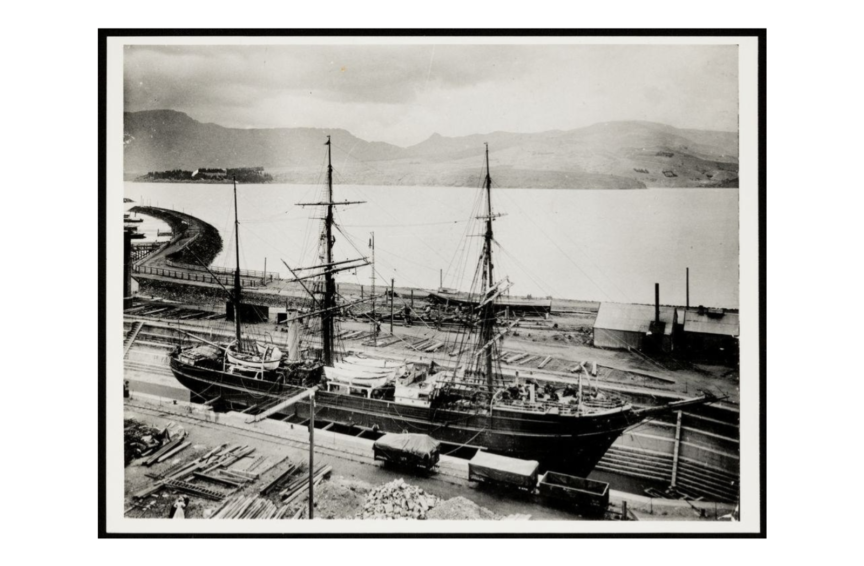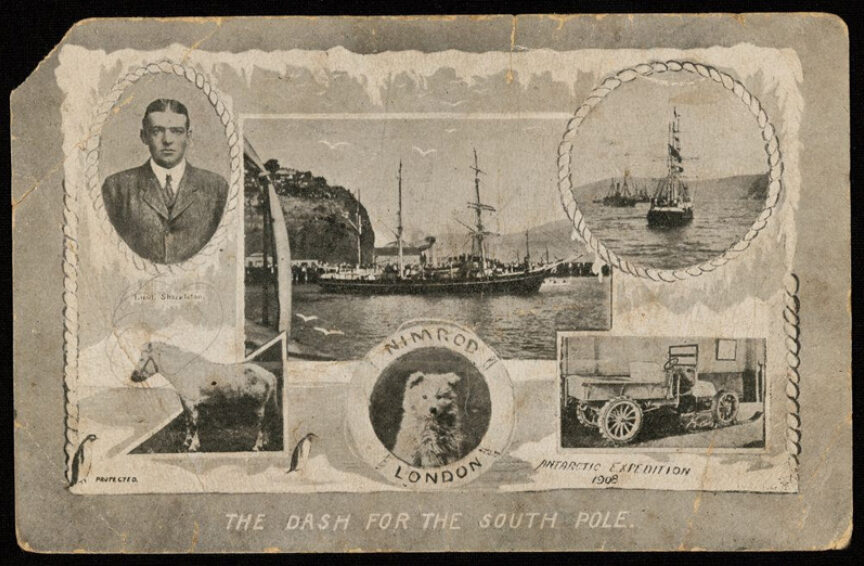PO Box 95
Lyttelton 8841
Te Ūaka recognises Te Hapū o Ngāti Wheke as Mana Whenua and Mana Moana for Te Whakaraupō / Lyttelton Harbour.

The Nimrod in Lyttelton Harbour, January 1st 1908.
Te Ūaka The Lyttelton Museum ref. 9899.1
"Nimrod's" New Year
The first day of 1908 was an auspicious one for Ernest Shackleton and his crew for the departure of the ‘Nimrod’ on a polar expedition which aimed to be the first to the South Pole. That goal was not achieved but Shackleton and others did reach the most southern latitude to date, naming the Beardmore Glacier as they went. They returned just 97.5 nautical miles shy of the pole due to the physical toll of severe conditions and reduced rations. Other crew of the expedition reached the South Magnetic Pole and made the first ascent of Mount Erebus.
The ‘Nimrod’ was a small ship, a then forty year old vessel previously used for sealing which was less than half the size of Scott’s ‘Discovery’ of his 1901-1904 expedition. The ‘Nimrod’ arrived from England in Lyttelton on 23 November 1907 - the time spent until departure entailed outfitting the ship, selecting crew and training the dogs and ponies quarantined on nearby Quail Island. It also involved fundraising. There was much local interest in the expedition and Shackleton was a charismatic man who gained many admirers in New Zealand. He was able to secure some support from locals and 1000 pounds from the New Zealand government. There were many interviews in the Lyttelton Times and public lectures, with enthusiastic followers travelling from Christchurch to learn about the ship, the scientific exploration and the dogs and ponies who were a popular focus of interest.
On 1 January 1908 approximately 30,000 people farewelled the ship and its men, although some estimates put the crowd of spectators closer to 50,000. Bands played, guns boomed, sirens and whistles shrieked and flags fluttered in a good breeze. Shackleton said: “This farewell from New Zealand has been unparalleled in the history of Polar exploration for the kindness and the warmth of enthusiasm manifested by a genuine people. It is the one final touch.”
See also Quatermain, L.B. (1971) New Zealand and the Antarctic.

